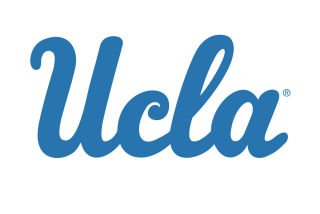Division II Football Scholarships Reduced
DALLAS — The squeeze play was on, but delegates at the NCAA special convention missed the sign.
Cal State Northridge arrived expecting proposed Division I cutbacks to push its broad-based program away from Division II and up toward Division I. With the gap between Division I and II athletic scholarship and staff numbers narrowed, CSUN might have been able to improve its status with a skip instead of a leap.
There was just one problem--the delegates didn’t oblige.
If Tuesday’s proceedings could have been put to dance, they would have been doing the rumba. Three strides one way, reversal, three strides back.
The convention, only the sixth such “special” meeting in the 81 years NCAA delegates have convened, was called to address cost-cutting proposals that would reform rules governing recruiting, compensation of coaches, playing and practice seasons, size of coaching staffs, and financial aid.
There were some cuts, but they were made with scissors this time instead of machetes as in previous cnventions.
In Division II, the only significant money-saving proposal to pass reduced the maximum number of football scholarships from 45 to 40 beginning Aug. 1, 1988. A similar amendment that would have cut basketball scholarships from 12 to 10, failed.
In the morning session, Division II delegates approved a proposal for sweeping scholarship reductions in 24 men’s and women’s sports, but that amendment was overturned in a re-vote during the convention’s general business session in the afternoon.
The second vote on the amendment was requested by Dennis Keihn, athletic director at Cal State Los Angeles, after Division II delegates watched their Division I colleagues pass an increase in basketball scholarships from 13 to 15.
“The move from 13 to 15 was totally inconsistent with the intent of the convention,” lamented Northridge President James W. Cleary, a member of the NCAA Presidents Commission.
“Several Division I presidents commented to me that Division II was the only one that had some guts in terms in moving ahead with some cuts,” said Cleary after the intial session. “Now, in light of the of the Division I basketball amendment, the bulk of Division II has, understandably, changed its mind and given the cuts some further consideration.”
Bob Hiegert, Northridge’s athletic director, said the mood of the delegates had changed in the months since the NCAA’s regularly scheduled meeting January in San Diego, where delegates had advocated extensive cost-cutting measures.
“I think listening to the speakers yesterday we realized it wasn’t an urgent situation,” Hiegert said. “We have to make some changes. We are going to make some changes. But it’s not necessary to make them right now.”
The speakers Hiegert referred to peppered delegates with a wide range of suggestions on reform Monday, during the first of a series of national forums on the proper role of intercollegiate athletics.
Dialogue before legislation became the prevailing theme of the convention.
“Well, you have to begin somewhere,” Cleary said. “The NCAA has a history of requiring or consuming two or three years of discussion on a subject before major change occurs.”
Delegates will have 18 months to further digest resolutions calling for more reductions on playing and practice seasons, financial aid, athletics personnel and recruiting contacts.
“The convention achieved precisely what the President’s Commission had in mind,” Cleary said. “We have a lot of people thinking about basic issues of cost and the place of intercollegiate athletics in higher education.”
A maximum six-month playing season has been established in Division II sports to reduce practice demands on athletes.
A proposal to eliminate spring football at the Division II level was referred back to the Presidents Commission for further study. It is likely that another amendment calling for reductions length of practices will be voted on at the next NCAA Convention in January.
More to Read
Go beyond the scoreboard
Get the latest on L.A.'s teams in the daily Sports Report newsletter.
You may occasionally receive promotional content from the Los Angeles Times.







